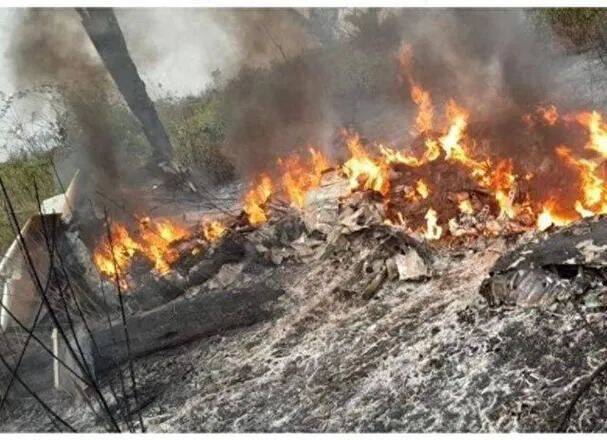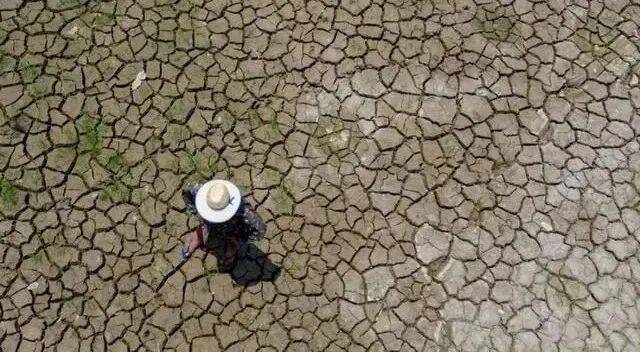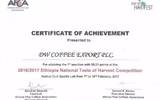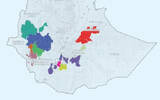Sudden floods in São Paulo State, Brazil! Coffee season is in distress
According to Brazilian media reports, several states in southern Brazil have recently been hit by storms and thunderstorms, the worst of which are the states of Sao Paulo and Rio de Janeiro, which have brought many casualties, traffic chaos and serious damage to these areas. According to statistics, three people are missing and eight are dead.
According to reports, the strongest wind speed recorded in Rio de Janeiro State reached 87 km / h, and the strong wind was so severe that a wall collapsed in a construction area in the coastal area, killing three workers. With heavy rainfall, cables in some areas were damaged and trees collapsed, affecting part of the local road transport.
According to the Sao Paulo State Civil Defense Bureau, torrential rains once again triggered power outages in parts of Sao Paulo. The Sao Paulo Emergency Management Center reported that several areas were in a flood warning state and recorded winds of up to 126 kilometers per hour. According to a report released by Enel Power, more than 70, 000 customers have lost power to their homes.
According to the Civil Defense Bureau, the rainfall reached 120 mm in just three hours, equivalent to a normal month's rainfall, causing flooding and waterlogging in some areas, causing vehicles to be washed away, trees collapsing, and three people missing. Floods even flooded into hospitals.
The Sao Paulo State Fire Department reported that a small plane crashed in the Paraibna Mountains of Sao Paulo, killing all five people on board. It is reported that the plane crashed in stormy weather that day and the wind speed was too high. Currently, the Aviation accident investigation and Prevention Center (Cenipa) is investigating the main cause of the crash.

In addition, Parana, Santa Catarina and Rio Grande do Sul were also affected by severe storms, with several cities recording tree collapses and flooding, and the government issued warning signals and the possibility of hail. According to the meteorological department, the storm was caused by a hot and humid climate in these areas, as well as a sharp drop in temperatures in Brazil, Paraguay, Argentina and Uruguay, which is a factor in the formation of extratropical cyclones.
Since the beginning of this year, Brazil has been affected by bad weather, and since May this year, it has been threatened by drought, which is hot and dry, with little or no rainfall for a long time, causing the land to dry and rivers to dry. Serious fires also broke out because of the dry climate, and some coffee trees and land were burned, affecting coffee production in the new season.

Brazil, as the world's largest coffee producer and exporter, the decline in coffee production in the new season also pushed up global coffee prices and broke the record for the highest price at one point. However, since the beginning of the rainy season in Brazil in October, the Brazilian climate department has reported that rain has begun to fall in the southern coffee producing areas, alleviating the drought. Coupled with the lack of deforestation regulations in the European Union and the strong rise of the US dollar, coffee prices have begun to fall.
Although the resumption of rainfall can ease the drought, there is too much rainfall, especially in the state of Sao Paulo, which suffered a storm on October 11, resulting in massive power outages and huge economic losses. The storm brought flooding and waterlogging, Brazil is in the blooming season of coffee trees, excessive flooding may wash out farmland, the storm will also shoot down coffee flowers, thus affecting production. In addition, the recent disruption of rainfall patterns in Minas Gerais, Brazil's largest coffee producing region, has made it extremely difficult to grow coffee and threatened coffee production in the new season.
In addition, the storm also affected inter-regional logistics and exacerbated ship delay rates in several ports in southern Brazil. Therefore, the current market concern, Brazil continues to report a reduction in coffee production, coffee prices will remain high, and there is a possibility of rise.
For more information about coffee producing areas, please scan the code directly and follow: coffee comments.
Long press the QR code to follow:
Important Notice :
前街咖啡 FrontStreet Coffee has moved to new addredd:
FrontStreet Coffee Address: 315,Donghua East Road,GuangZhou
Tel:020 38364473
- Prev

Are Huakui coffee beans a substitute for Rose Summer? Why is Huakui Coffee called Huakui? Can a mocha pot extract lightly roasted coffee beans?
It can be said that nearly 70% of the mocha pot inquiries received backstage on the front street asked how to use the mocha pot to extract lightly roasted coffee beans. As the saying goes: radish and cabbage, each has his own love! Not all friends like to make coffee with deep-baked beans with charred aroma and mellow aroma, so often, they choose flavor
- Next

What is the "Red Cherry Project" in Ethiopian coffee?
Ethiopia is Africa's largest coffee producer. It has a long history of coffee cultivation and is recognized as the birthplace of coffee. It also has countless native coffee varieties. According to statistics, there are now 10000 to 15000 coffee varieties in Ethiopia. The coffee produced in the country has fruit flavors and flowers
Related
- Being chased out of the rain in front of Starbucks?! Store: Sheltering from rain under umbrellas poses a safety hazard
- The white moonlight has changed?! Lucky launches "Big Winter Pear American"
- Hand-brewed coffee three-stage method, high-sweet and universal brewing method to share! What does the high sweet water level of hand-brewed coffee mean?
- What is the difference between raw, refined and full espresso coffee? How to extract espresso and taste good?
- A complete list of coffee bean names and their meanings! What is Yejia Shefi coffee? Where is Mantelin coffee?
- What grade does Arida Manor Kaduai coffee beans belong to? What treatment is Arida ASD slow anaerobic sun exposure?
- The milk tea cup becomes smaller?! Overlord Tea Girl launches a new "Return to Yunnan" series
- Accused of selling counterfeit and high-priced coffee beans! Well-known boutique coffee brand "Oukelao" bowed and apologized!
- How to make espresso dumplings? Can I eat coffee and glutinous rice balls together?
- Save the unformed and stagnant powder cakes in one second! What is the problem with stagnant water in the powder bowl of the espresso machine?

